Nancy Marie Brown's Blog, page 10
June 24, 2014
The Uig Chessmen
 In 1831, "a number of figures carved in ivory, apparently chessmen" appeared for sale in Edinburgh. Ten were quietly bought by an antiquarian and now reside in the National Museum of Scotland, along with an eleventh that surfaced a little later. The other 48 face pieces, some pawns and plain discs (possibly counters for a game like backgammon), and an ivory buckle were sold to the British Museum, where these "Lewis chessmen" are among the most popular objects on display.
In 1831, "a number of figures carved in ivory, apparently chessmen" appeared for sale in Edinburgh. Ten were quietly bought by an antiquarian and now reside in the National Museum of Scotland, along with an eleventh that surfaced a little later. The other 48 face pieces, some pawns and plain discs (possibly counters for a game like backgammon), and an ivory buckle were sold to the British Museum, where these "Lewis chessmen" are among the most popular objects on display.Carved of walrus tusk, several of the Lewis chessmen look like Viking berserks, biting their shields. Based on such details of design and dress, the chessmen are thought to have been made in Scandinavia around the year 1200. In my book-in-progress, The Ivory Vikings (to be published in the U.S. and the U.K. in May 2015 by Palgrave MacMillan), I examine the controversial theory presented by Gudmundur G. Thorarinsson (here: http://www.leit.is/lewis/) that the chessmen were created in Iceland by a woman named Margret.
But where they were made is not the only controversy surrounding the chessmen. They're called the Lewis chessmen, for everyone agrees they were found on the Isle of Lewis in the Outer Hebrides, off the west coast of Scotland. But when I went to Lewis two weeks ago, I heard several different stories of how--and where--they were discovered.
They were “buried fifteen feet under a bank of sand” on Uig Strand, somewhere near here:
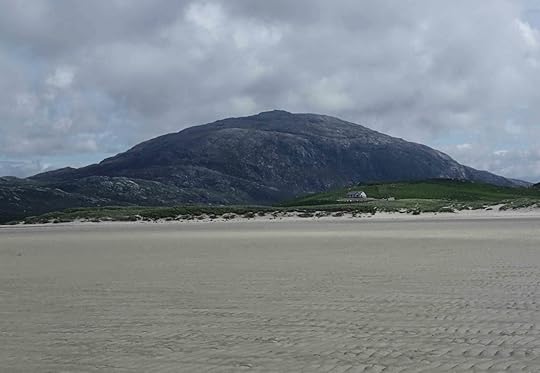
They were found six to eight miles away at the “House of the Black Women,” thought to be an ancient nunnery, somewhere near here:
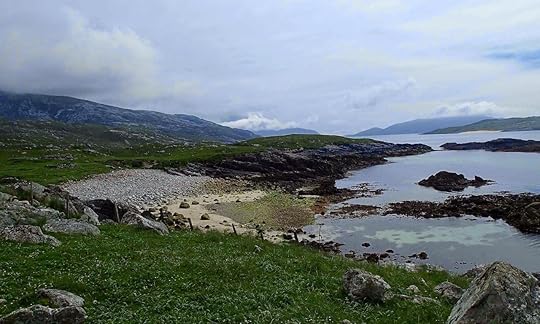
There was a shipwreck—and a murder. They were dug up by a cow, or a cow fell into a hole, or a wild storm scoured the dunes and exposed a strange underground room out of which a bevy of elf faces peered.
Once found, the chessmen were taken to the minister at Baile-na-Cille. He kept them here at the manse, before sending them on to Edinburgh to be sold:

In Ardroil, at the head of Uig Bay, the locals have erected a wooden chessman to mark the spot where the chessmen were found:

In Mealasta, site of the "House of the Black Women," archaeologists have dated a grain of barley to about the year 1200, when the chessmen were likely made:

The stories will never permit us to choose between Ardroil and Mealasta. All the accounts do, however, link the chessmen with Uig. The name--pronounced OO-ick--comes from the Old Norse word for bay, vík, from which we get our word Vikings.
"Uig" in the 1830s referred to the parish, not just to the bay, an area of over 200 square miles. Dave Roberts, a former schoolteacher who lives on a croft here, explained to me that adventurers who came no further than the Standing Stones at Callanish would say they’d been to Uig. And they had, indeed, crossed into the parish. But to reach Uig Strand took a fifteen-mile ferry ride down Loch Roag, then a four-mile walk along the boggy banks above Valtos Glen.

At low tide, the find spot at Ardroil would be a half-hour from there across the sands. The House of the Black Women would be a half-day’s hike over rather challenging terrain.
So where did the Lewis chessmen come from? We can all agree they came from Uig. Maybe we should start calling them the Uig chessmen.
Published on June 24, 2014 09:12
June 3, 2014
Living Stones
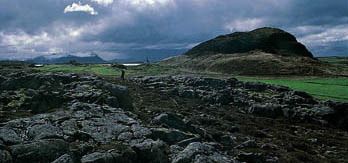 Last year I wrote about a thin place, a place where the barrier between worlds--of ordinary and divine, of reality and story--are permeable. My place is Helgafell, a hill in Iceland. Its name means Holy Mountain.
Last year I wrote about a thin place, a place where the barrier between worlds--of ordinary and divine, of reality and story--are permeable. My place is Helgafell, a hill in Iceland. Its name means Holy Mountain.I'm there now, wandering about in the fog and drizzle and occasional brief patches of brightness, and looking down more often than around at the mountains for the basic reason that I'm not wearing my Wellington boots and it takes a lot of concentration to hop through the marsh and mire and along the waterline without getting my feet wet.
So, of course, I came home with wet feet. But also with a hundred photos of what I saw while attempting to pay attention to my feet.
Here are a few of my favorites.




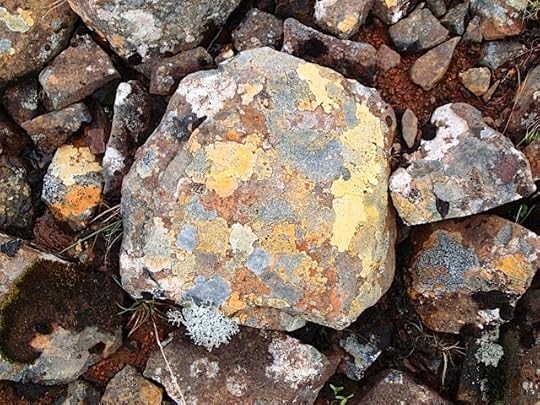


Published on June 03, 2014 14:36
May 28, 2014
In Horse Heaven
 This week I'm leading my second tour for America2Iceland, this one with a theme borrowed from my first book, A Good Horse Has No Color. Not everyone on the tour read my book in advance, some are reading it here in Iceland and discussing it with me. But this morning, before we tacked up our horses, Debby gave me a big hug. "If you hadn't written that book, I wouldn't be here," she said.
This week I'm leading my second tour for America2Iceland, this one with a theme borrowed from my first book, A Good Horse Has No Color. Not everyone on the tour read my book in advance, some are reading it here in Iceland and discussing it with me. But this morning, before we tacked up our horses, Debby gave me a big hug. "If you hadn't written that book, I wouldn't be here," she said.Well, Debby, neither would I! And isn't it just horse heaven?
This tour is centered around a riding clinic led by Guðmar Pétursson, and is based at his own farm of Staðarhús, near Borgarnes in western Iceland. Here are some photos from my morning's walk:
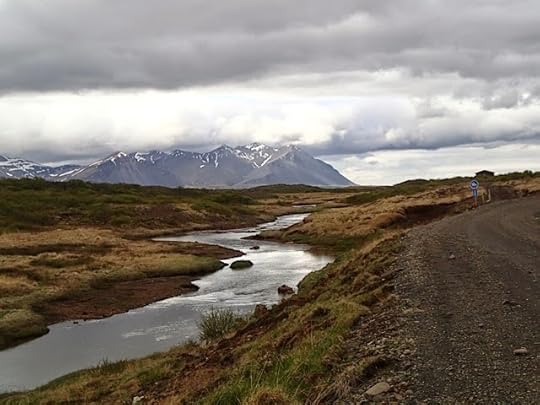


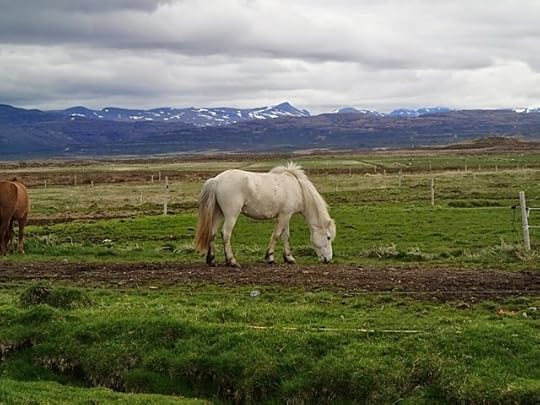




Published on May 28, 2014 06:44
May 7, 2014
At the Foot of a Volcano
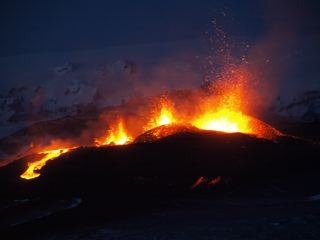 Four years ago I had the adventure of a lifetime when a volcano erupted in Iceland and a friend and I took a jeep right to the crater's feet. I wrote about it in one of my first blog posts: "It sighed and breathed like a magical being, sending up mesmerizing red fountains of molten rock." It made me dream of dragons.
Four years ago I had the adventure of a lifetime when a volcano erupted in Iceland and a friend and I took a jeep right to the crater's feet. I wrote about it in one of my first blog posts: "It sighed and breathed like a magical being, sending up mesmerizing red fountains of molten rock." It made me dream of dragons. Two weeks later a bigger eruption, of the famously hard-to-pronounce Eyjafjallajökull, shut down air traffic all over Europe.
Since then, I've been hearing at regular intervals that Hekla, or another one of Iceland's big volcanoes, is going to blow its top. Here's the latest one, as reported in the Reykjavik Grapevine: "UK Govt: Icelandic Volcano As Great A Threat As Nuclear Terrorism."
It's true that Hekla is overdue for an eruption. Scientists can tell that the magma chamber is full. Warning signs are posted at all the roads and hiking trails in the vicinity of the mountain, with a QR-code you can use to access the latest safety warnings. Last time Hekla erupted, there was only 30 minutes' warning. (Read about the QR codes at Iceland Review.)
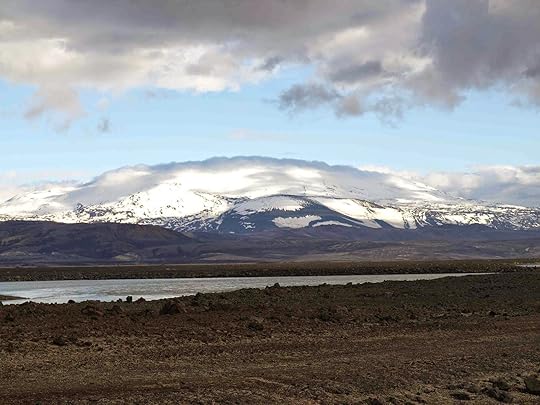 Iceland's volcanoes are already heavily monitored, and Icelandic scientists, including my good friend Kristín Vogfjörð, have organized a huge EU-funded research effort, FutureVolc, to try to improve their eruption predictions. (See http://futurevolc.hi.is for more on that project.)
Iceland's volcanoes are already heavily monitored, and Icelandic scientists, including my good friend Kristín Vogfjörð, have organized a huge EU-funded research effort, FutureVolc, to try to improve their eruption predictions. (See http://futurevolc.hi.is for more on that project.) But sitting where it is, right over a hot spot where the European and American tectonic plates are spreading apart, Iceland is guaranteed to have another big eruption sooner or later. It might be an inconvenience, like the eruption in 2010. Or it might be a disaster.
One eruption of Hekla in 1104 wiped out the medieval farm called Stöng. Archaeologists call it Iceland's Pompei--though they found no preserved bodies. There's a beautiful reconstruction of the medieval longhouse near where the original farm stood.
Even closer to the volcano lies the modern farm of Leirubakki. Driving the long way around from Stöng last year, I went an hour without meeting any other cars. The mountain of Burfell looked like a sugar cube. The greenish glacial river Thjorsá rushed by. Across it, Hekla sat with her head wrapped in black clouds--as usual. "Hekla" means "Hooded One."
 Over the bridge and heading back south, I passed tumbled heaps of cold lava lying picturesquely along the roadside, interspersed with patches of black sand. Here and there grasses and spindly birch were reclaiming the desert.
Over the bridge and heading back south, I passed tumbled heaps of cold lava lying picturesquely along the roadside, interspersed with patches of black sand. Here and there grasses and spindly birch were reclaiming the desert. Finally, I turned down a lane, passed a hedge of trees, and found an endless meadow filled with horses. A half hour later, after checking into the Leirubakki Hotel, I was on a horse taking an hour's ride through a lava field. Then I treated myself to a long soak in the hot-tub and a delicious fish dinner, complimented by a local beer, in the restaurant of the Hekla Center, the volcano museum on the grounds.
Initially Leirubakki looked to me like a village, a jumble of buildings in vastly different styles. But when I saw it from a different angle, the strange combination of rooflines matched the foothills of the mountain behind them and it all made sense: the main house, the museum and restaurant, and the hotel all fit into the landscape.
The windows of the restaurant look out onto the volcano, Hekla. The only complaint I had about dinner was the constant noise, like someone idling a big diesel rig outside the room--then I realized it was the soundtrack of the museum next door. A fake eruption was in progress. That put a different spin on things and I began thinking how vulnerable this farm was, sitting at Hekla's feet.
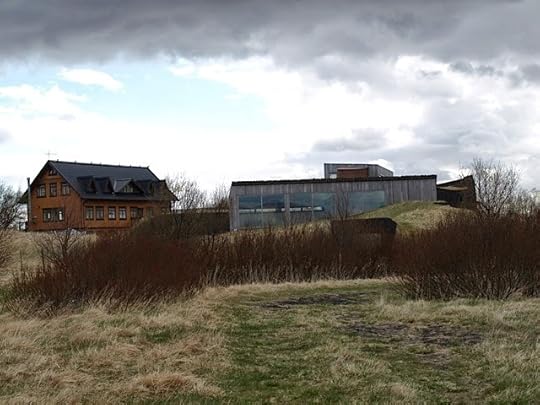 The farmers think about it all the time--which is why they built the museum (with professional help). The next morning I took the tour. It's a wonderful display, very scientific and with lots of educational content presented in an entertaining way.
The farmers think about it all the time--which is why they built the museum (with professional help). The next morning I took the tour. It's a wonderful display, very scientific and with lots of educational content presented in an entertaining way. Big TV screens show loops of various kinds: aerial shots, eruptions, seismometer readings, a simulation of a magma chamber, paintings and photos of the volcano in action. The walls are filled with quotes about the volcano, including one that names it "the mouth of Hell." A timeline describes the 23 known eruptions since the settlement of Iceland, the first being the big one in 1104. The longest eruption lasted two years. The most recent was in 2000. The next one? It could be tomorrow.
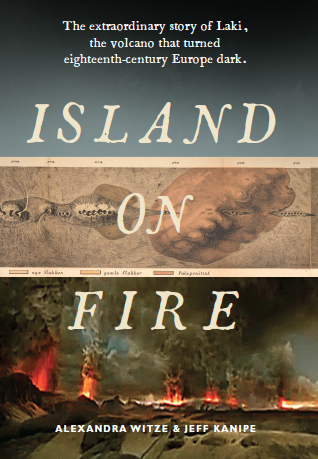 If you want to learn more about Iceland's volcanoes, I recommend Island of Fire: The extraordinary story of Laki, the volcano that turned Europe dark, by Alexandra Witze and Jeff Kanipe (Profile Books, 2014). Read about it here: http://lakithebook.wordpress.com
If you want to learn more about Iceland's volcanoes, I recommend Island of Fire: The extraordinary story of Laki, the volcano that turned Europe dark, by Alexandra Witze and Jeff Kanipe (Profile Books, 2014). Read about it here: http://lakithebook.wordpress.com
Published on May 07, 2014 05:43
April 2, 2014
The Lewis Chess Queen
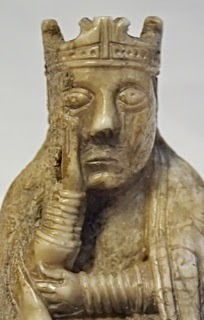 What is she thinking? Let me know at nancymariebrown@gmail.com and I'll put the best responses in my next book. If you give me your real name, I'll also include you in the acknowledgments.
What is she thinking? Let me know at nancymariebrown@gmail.com and I'll put the best responses in my next book. If you give me your real name, I'll also include you in the acknowledgments.As I announced in January, my new book-in-progress is a biography of a set of objects, the Lewis chessmen. These seventy-eight walrus-ivory figures, each under four inches tall, are the most famous chessmen in the world. Found in 1831 on the Isle of Lewis in the Outer Hebrides off the west coast of Scotland, the Lewis chessmen are the most valuable archaeological treasure ever found in Scotland. At the British Museum in London, where most of the chessmen reside, they are one of the most popular exhibits. Several of them feature prominently in the current Vikings: Life and Legend exhibition at the museum--even though scholars agree they were made well after the Viking Age (between 1150 and 1200).
One reason they are so popular is the expressiveness of their faces--and how hard those expressions are to interpret. The queens, particularly, mesmerize me. All have one hand pressed to their cheeks. There's a beautiful 360-degree interactive video from the British Museum in which you can turn one of the Lewis queens all the way around as if holding her in your hand. [Click here to access the video.]
The caption says, "This chess queen resting her face on her hand in an expression of gloom was probably left on Lewis by a merchant sailing to Dublin, a Viking colony. Why's she so sad? Is she contemplating the vast Atlantic?"
I never thought this queen's expression was sad or gloomy.
I asked a friend of mine to look at the British Museum video. She commented, "I'm not sure I think the expression on the queen's face is sadness. Both the king and queen seem pensive, as if the weight of their responsibilities is paramount."
Sad, gloomy, pensive…
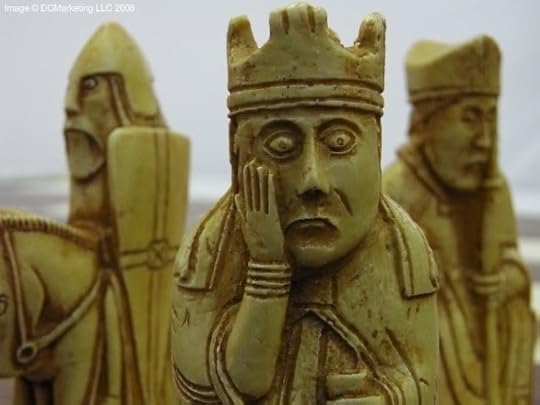
There are eight Lewis queens extant. When I used a photograph of this one as an illustration in Song of the Vikings, I called her expression "aghast."
What do you think?
The Ivory Vikings will be published in New York and London by Palgrave Macmillan in Spring 2015. My writing deadline is September 2014--which gives me six months. Odin's ravens, Huginn and Muninn (Thought and Memory), are going to be very busy with this new project, so they may not be visiting this blog as frequently as in the past. They'll stop in now and then, however--always on a Wednesday--at nancymariebrown.blogspot.com.
Published on April 02, 2014 07:45
March 25, 2014
A Viking Ship at Midnight
 I first saw the Viking ship replica Gaia on September 18, 1991, at the Massachusetts Maritime Academy, as I wrote in my previous post. I was researching my book The Far Traveler and wanting to know everything I could about Viking ships, so I caught up with it a second time the next day at Fort Adams State Park in Newport, Rhode Island.
I first saw the Viking ship replica Gaia on September 18, 1991, at the Massachusetts Maritime Academy, as I wrote in my previous post. I was researching my book The Far Traveler and wanting to know everything I could about Viking ships, so I caught up with it a second time the next day at Fort Adams State Park in Newport, Rhode Island.We drove in past a rounded hill covered with kite flyers. It was hot and sunny. My three-year-old was asleep in his carseat, so I scurried alone toward the harbor to find the ship, leaving my husband to babysit. Behind a squat brick building that said “Vinland Revisited,” I passed a tall, blond, sunglassed man with large ears. I know those ears, I thought. “Ulfur?” I called. Ulfur had some position in the Icelandic government. I had met him recently at a party at an Icelandic friend’s house. I could not remember his last name.
He turned and, recognizing me, grabbed me by the elbows and began shouting in Icelandic. Registering my blank stare, he repeated in English, “Run! Run to Gaia. Ask for the captain, Gunnar. Tell him you can go on the ship in my place. Run! For an hour’s cruise.” I ran.
Down the hill, cutting across the beach, all out of breath, I pushed through the crowd. The boat was full of people. “Gunnar!” I called in Icelandic, “I just met Ulfur and he says I can go instead of him!”
“Hah?” I had his attention, but he didn’t comprehend my babbling.
I persevered, shouting out my fractured grammar.
He smiled, “Okay! Come on board!”
One of the crew straddled from the cabin to a two-inch outrigger of the mast and grabbed my arm firmly. I swung aboard.
 Standing on the raised steering deck, grasping the carved tiller of the side rudder, Gunnar was distant, majesterial. I stood at his feet. He bent his head to listen to my questions, but kept his eyes on the water ahead.
Standing on the raised steering deck, grasping the carved tiller of the side rudder, Gunnar was distant, majesterial. I stood at his feet. He bent his head to listen to my questions, but kept his eyes on the water ahead.“Aren’t we going under sail?”
“No. The wind is wrong.”
After a few minutes, “Are we just going to motor?”
“No, no. We will sail.”
Getting out of dock, even under diesel power, was tricky. The boat veered too close to the breakwater—three crewmembers pushed it away with their feet, balancing on Gaia’s gunwale. The stern grated against the concrete. Gunnar’s head snapped around and he left the tiller hastily, shoving at the wall until she was clear.
Then we were out in the bay, a slew of smaller boats jockeying around us. The Norwegian consul and his family were ferried out in a rubber Zodiac: three darling blond-headed kids, the oldest a very sober nine-year-old in a coat and tie. The consul’s wife wore pumps. Looking around, I suddenly realized that my jeans and sneakers were breaking the dresscode; of the 30 people on the boat, all were formal but the crew.
There was Vigdis Finnbogadottir, the president of Iceland, in high heels and a lacy shirt, sporting a wide-brimmed hat with a ribbon. And Knut Kloster, the Viking Cruise tycoon who had bankrolled the ship, in a blue business suit. An old gent in a blazer and his wife, dolled up in ruffles and beads, came aft. He carried a video camera. He shoved me out of the way and began filming Gunnar—“our captain on the Gaia, Gunnar Sigurdsson—no, Eggertsson, a good man.”
 I, in turn, backed into President Vigdis. There was nowhere else to go. With 30 people on board, the ship had the feel of a crowded cocktail party where someone’s elbow is always threatening your wineglass.
I, in turn, backed into President Vigdis. There was nowhere else to go. With 30 people on board, the ship had the feel of a crowded cocktail party where someone’s elbow is always threatening your wineglass.“Excuse me,” I said to President Vigdis, in Icelandic.
“Are you Icelandic?” she asked.
“No,” I answered, “I am a friend of Ulfur’s brother’s son’s wife.”
She laughed. It was a typical way a person would be introduced in the sagas. “And you are learning Icelandic,” she said, with obvious approval.
She drifted away, and I found myself facing one of the crew, Eggert Sigurdsson, who also wanted to know if I was Icelandic. All the Icelanders who crewed any of the four ships, he explained, were on Gaia today to honor President Vigdis. They had heard me speaking Icelandic and wanted to know why. We settled in for a nice talk about the sagas. Eggert had grown up near Borg, the farm established by the saga hero Skallagrim (literally, Bald Grim), son of Kveldulf (Evening Wolf). Eggert had run away from home when he was sixteen to join the Merchant Marines. He tried to teach me to pronounce his name correctly.
“You’re saying ekkert, not Eggert.”
Ekkert is the Icelandic for “nothing.” I couldn’t hear the difference.
“It’s a very small distinction from me to ‘nothing.’” He pouted.
 Gunnar bellowed from the tiller. Eggert leaped on top of the cabin and began unfurling the sail. There would have been no enclosed cabin on a real Viking ship; like the diesel engine, it was a concession to modernity. But where the cabin was on Gaia, the Vikings would have put their cows and bull—both Vinland sagas are clear that they had livestock with them. Watching Eggert on the cabin, I couldn’t imagine him handling the sail from the back of a bull.
Gunnar bellowed from the tiller. Eggert leaped on top of the cabin and began unfurling the sail. There would have been no enclosed cabin on a real Viking ship; like the diesel engine, it was a concession to modernity. But where the cabin was on Gaia, the Vikings would have put their cows and bull—both Vinland sagas are clear that they had livestock with them. Watching Eggert on the cabin, I couldn’t imagine him handling the sail from the back of a bull.And how they did work around 50-plus passengers? Gaia’s best crew size, Gunnar had told me, was 10. Today, the dignitaries trying to help were just tangling the ropes. Those staying out of the way, like the cruise-line tycoon, found themselves in exactly the wrong place. Kloster was ensconced in the bow talking to the Norwegian consul. Two of the crew carefully pulled a rope out so they could shorten it without hitting him or asking him to move, but as they hauled it in, it dragged through the sea, and he ended up with that dripping rope rushing over his shoulder. He started up, surprised.
Up, the sail was enormous. It filled the sky, heaving, breathing. It cut the boat in half—the crew in the bow could hardly see Captain Gunnar and vice versa.
Now all was quiet but for the sibilant hiss and rush of water past the boat and the soft chatter of the passengers. Gunnar stood with one hand on the steering oar, one on a sail-rope, playing it like a kite-string to hold the breeze. The boat suddenly felt twice as large, its motion steady and sure. I leaned against the cabin and stared out at the wide-open sea.
 Eggert came back and picked up the conversation where he had left off. “I let them call me ‘nothing’ for eight years in the Merchant Marines,” he said. He now worked with troubled adolescents in Reykjavik and was finishing a degree in psychology. He was married to a lawyer, and had a nine-year-old daughter.
Eggert came back and picked up the conversation where he had left off. “I let them call me ‘nothing’ for eight years in the Merchant Marines,” he said. He now worked with troubled adolescents in Reykjavik and was finishing a degree in psychology. He was married to a lawyer, and had a nine-year-old daughter.“Will it be a step down coming home from your Viking expedition?” I asked.
“No. I love what I do at home. Coming home is always a step up for me no matter where I am.”
That was nice of him to say, but I didn’t believe him. I had asked the same question to Gunnar when I interviewed him at the Massachusetts Maritime Academy. Gunnar had no plans for his future once he left Gaia. “You have to go down a little bit, think the whole thing over,” he said. “I’m going to need two or three weeks just to get into ordinary life.” (Later I learned that he had immediately started building his own Viking ship and, to celebrate the thousand-year anniversary of Leif Eiriksson’s discovery, had made the crossing from Iceland to America again in the year 2000. This boat, Islendingar, now has its own museum outside of Keflavik in Iceland. See http://www.vikingaheimar.is)
When he had first heard of Gaia, Gunnar had been laid up with a broken arm from an accident on a fishing trawler. The next day he wrote the organizers a letter stating his qualifications: on fishing boats since he was 14, skilled as a boatbuilder, experienced as a diver and ocean rescue-squad member. As he told me, “I can do a few things.” He was interviewed, then flown to Norway to join the team building the boat. When time came to choose a captain, the expedition leader appointed Gunnar.
“It was strange,” Gunnar had said. “In the beginning, when I first started to sail this ship, it was like I knew how to do it already. It was a kind of feeling, from the wind, how to do it right.”
Now another member of the crew joined me and Eggert in the quiet sunlight beneath the great white sail, a slim, young Norwegian named Odd Kvamme.
“Do you like sailing on days like this, or on rough days?” I asked Odd.
 “A little rougher,” he said. “You feel the pulse of the ship.”
“A little rougher,” he said. “You feel the pulse of the ship.”“Do you trust her?”
“Oh, yes. I didn’t at first, but I do now.”
And then Gunnar bellowed again. Odd and Eggert ran to their posts, Eggert on top of the cabin, beating the huge sail off himself as it came down—it enclosed him like the wings of a big bird, a beautiful, mythic image, embracing him again each time he hauled it off.
At the end of the trip, Odd helped me disembark with a strong arm on my elbow.
“Would you notice if I stayed on the ship?” I asked.
His face lit with a sideways gleam and a flirtatious, conspiratorial smile. “I think so,” he said.
I called out to Gunnar, “When are you sailing out tonight?”
“Between midnight and two a.m. Why?”
Join me again next Wednesday at nancymariebrown.blogspot.com for another writing adventure in Iceland or the medieval world.
Published on March 25, 2014 06:21
March 19, 2014
My First Viking Ship
 The first time I saw a Viking ship in the water, as I wrote in
The Far Traveler
, I was struck with the desire to stow away on it.
The first time I saw a Viking ship in the water, as I wrote in
The Far Traveler
, I was struck with the desire to stow away on it.My first Viking ship was not under sail. It was motoring down the Cape Cod Canal under diesel power. Saddled with the silly name Gaia, it had the inexplicable mission of spreading environmental awareness by arriving in America in 1991, one year before the 500th anniversary of Columbus’s “discovery.”
From the west coast of Norway, where the boat was built and financed by the Norwegian owner of the Viking cruiseship line, Gaia and her diesel-powered chase boat had followed the Viking route to the Orkneys, Shetland, and the Faroe Islands, to Iceland and Greenland, then over the ice-filled seas to Labrador and Newfoundland—or Markland and Vinland, as the Vikings had named them. In Nova Scotia, Gaia met up with two other Viking ship replicas, Oseberg and Saga Siglar (these had been crated and shipped by common carrier across the Atlantic). The convoy headed south, stopping for speechifying at Boston, Newport, New York, and Washington, D.C.

I caught up with the ships on September 18 at the Massachusetts Maritime Academy, where the crews would enjoy a much-needed hot shower and shore leave before the festivities in Newport. A dozen people watched from the quay as Gaia chugged gracelessly up to the dock; the other boats had arrived before her. There were no public events planned here. The Gaia crew tied up and, greeting the tourists politely but with an air of acute boredom, tried to slip past us into the building.
I had other plans in mind. I wanted to get onto a Viking ship, and I had a pretty good idea how to do so. There was only one Icelander on Gaia—the captain, Gunnar Marel Eggertsson—and I had learned everything I could about him.
I mingled with the crowd, listening. Ingolf, an elderly Norwegian I had spoken with while waiting for the ship, addressed one of the blond-headed sailors.
“Good day,” the young man replied, and held out his hand.
Ingolf’s wife clasped it in both of hers. “Will you give a message to our first cousin, Finn, in Oslo?”
She continued, giving great detail on Finn’s upbringing and qualities, until the young man interjected, “But, you see, I am from Iceland. I will tell one of the Norwegians.”
It was my cue. Casually, I said—in Icelandic: “Are you Gunnar? Gunnar á Viðivöllum?”

His head snapped toward me. His childhood nickname had not been published in any of the press releases. He moved aside so that the other crew members could pass by and let loose a stream of unintelligible Icelandic that ended, to my relief, with a simple question: “Are you Icelandic?”
“No,” I said. I had prepared this conversation ahead of time and knew my Icelandic was understandable, if not precisely correct, and, in its childish inflections, charming. “I have an Icelandic friend who grew up on Heimaey. She sends her greetings.”
My friend’s name meant nothing to Gunnar. Heimaey, which the press releases had reported as the captain’s home, is a small island south of mainland Iceland, small enough that every family knows every other. But my friend had warned me that she didn’t know Gunnar well. They had been in different grades in elementary school, and then she had gone to the mainland for high school. Her family had left the island permanently soon after that, when a volcanic eruption dumped several feet of ash on the only town. When I quizzed her about the Icelandic captain of the Gaia, all she could remember was his nickname.
“Her father ran the bakery?” I prompted.
“Oh, yes—”
A crewmate called to him, motioning urgently toward the building where lunch with the academy students was waiting. Gunnar answered him in a Scandinavian creole and turned to go.
“Bless, Gunnar!” I called, using the Icelandic form of goodbye. “It was nice to meet you.”
He spun around, remembering his manners, and, walking backwards, said, “When can I talk to you again?”
“I will be in Newport,” I said. “I can meet you there.”
But, seeing his answering smile, I decided Newport might be too far in the future. I waited until he was out of sight before rejoining my husband, who was minding our three-year-old son. I convinced them that a dock beside a diesel-powered Viking ship was an excellent place for a picnic. Well used to my fixation with all things Icelandic, my husband quietly agreed, asking only, “Didn’t you get an interview?”
“No,” I said, “but I will when he comes back from lunch.”
Lunch, however, was over quicker than I had thought. I had my son on my hip when I saw Gunnar hurrying back to the ship.
“Gun-nar!” I hollered, emphasizing the second syllable, Icelandic-style.
He pivoted, stared, then, recognizing me, waved. I handed my son off to my husband’s patient arms and quickly crossed to where Gunnar waited. “I am a writer,” I said. “I’m writing a book about the Icelandic sagas. May I ask you some questions?”
Gunnar sized me up. From a fellow Icelander—or at least the friend of a fellow Icelander—I had transformed into a journalist, dozens of whom he had already met. But perhaps an interesting journalist to pass an hour with, one who speaks his language—a little clumsily—and knows his country’s literature. And was giving him her undivided attention.
“Yes,” he said, “now.”
Before we could begin, he was called away by an academy student to check one of the ropes on Gaia’s bow. Running down the ship’s ladder, he pulled up a floorboard and tugged to get a new rope out. It was stuck. Beside him another crewman lifted another board, poked around to free the rope, then took it away, leaving Gunnar alone on the deck. He looked up to find me watching. “Do you want to come down?” he said.
“I can’t,” I answered. I pointed at the sign which said so quite clearly.
“Yes, come down,” he said.
As I stepped over the rail, trying to manage the ladder gracefully, the academy student scurried over to shoo me away, pointing, in his turn, at the sign.
“She is interviewing me,” Gunnar said, peremptorily, captain-like, in English. The student held the ladder for me.
I scrambled down and was suddenly breathless. I was on a Viking ship!

Although I knew it had been built only the year before, the ship felt old, well broken in. I ran my hand around an oarhole, fingered the shield rail. The wood was soft, smooth, and golden. Gunnar perched on the gunwale above me. I had to squint into the sun to see him, the light making his blond curls into a corona. Under his several days’ beard, he was very tanned, the blue eyes startling in the brown face. He was not tall, but stocky and solid, as if hard to push over. He wore a white Gaia T-shirt, jeans, and soft leather oxfords. Around his neck was a gold amulet showing a ship under sail, heeled over. Although we had a nice, hour-long talk about sailing a Viking ship, I knew it wasn’t enough.
Join me again next Wednesday at nancymariebrown.blogspot.com for another writing adventure in Iceland or the medieval world.
Published on March 19, 2014 06:05
March 12, 2014
How to Row a Viking Ship
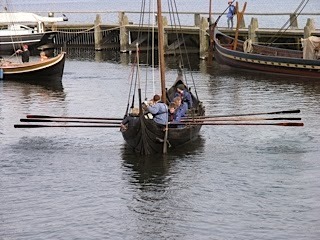 Writing about the "Vikings: Life and Legend" exhibition at the British Museum last week, and the dragonship at its center, I recalled one of my adventures while researching my book The Far Traveler: I got to row a Viking ship. A very little Viking ship. A Viking fishing boat, perhaps we should call it. Its name was Kraka Fyr.
Writing about the "Vikings: Life and Legend" exhibition at the British Museum last week, and the dragonship at its center, I recalled one of my adventures while researching my book The Far Traveler: I got to row a Viking ship. A very little Viking ship. A Viking fishing boat, perhaps we should call it. Its name was Kraka Fyr.I had made arrangements to interview Ole Crumlin-Pedersen, the former curator of the Viking Ship Museum in Roskilde. Checking my email the day before, I saw an urgent message from him: "Meet Anton Engler at the Dutch Bridge at 9:30 and you can go out in the ship."
At the Dutch Bridge at 9:30 the next morning, I learned that Engler was being interviewed by German TV for a series about Germans in other countries who had interesting jobs. What could be more interesting than being a builder of Viking ships? He was taking the TV crew out on the smallest of the museum's Viking ship replicas--and there was room for one more rower. I got a blue Vikingeskibenemuseet smock and a black life vest from the racks and climbed down the ladder onto the ship.
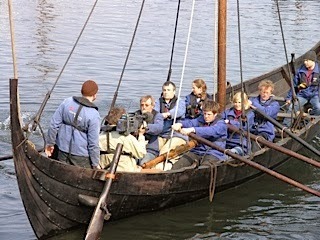
There were 10 of us in the boat: six rowers, including Engler, the TV show host, and me; a cameraman and a sound man; the captain at the steering oar; and one extra hand. Engler stationed me on the bench behind him and went over the technique and the terms: Ready, row, scull (row backwards), rest—or something like that. The rowing is in-sweep-out-pause, in-sweep-out-pause. “It’s not a circular motion,” he said. Could he tell I'd never rowed a boat before?
The TV personality was a small blonde. She rowed opposite Engler. I could understand enough German to hear that she wanted to know when the Viking age was and where the Vikings went in their boats.
It was difficult to keep in time (though we were only three oars to a side). I also seemed to bump into Engler's back quite often—maybe I was leaning too far forward, trying to put some force into my stroke. Rowing forward (we faced backwards) was fairly easy, but rowing backwards was much more difficult and I never really got the hang of it. Setting the oars in the water to hold the boat was also hard—you could feel the tide tugging the oar.
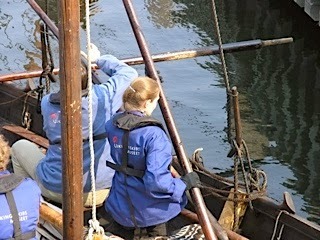
When I put my oar out the first time, I got the oar string twisted and it was hard for me to keep the oar in the right place—the oar locks are just like crooked fingers, with a twist of twine to hold the oar in the crook. If the string is loose, it’s harder to row. After Anton reknotted it tighter, it was much easier going, until the knot loosened itself again. I noticed his knot was loose too, but his oar never left its slot. He could row and be interviewed and never miss a beat.
Engler and the others put up the sail and took it down again several times so the TV crew could get a good shot. Sometimes the ropes got tangled, and they had to force the yard vertical and push it behind the stays. Once when the sail was going up, the rope broke (or someone let go of it). Yard and sail came crashing down--right on top of me.
Anton thought I’d been hit on the head. He practically dove under the sail, “Are you okay!”
“Yes," I said, "can I come out?”
He laughed in relief. When the yard started down, I slipped backwards off my bench and onto the floor of the boat so it wouldn't whack me. Still, I was smothered in heavy sailcloth. It was hard to wriggle out from under it all.
Finally the sail was up: We went skimming along. We all lay back, when the boat threatened to dip low enough to take on water. I went up into the bow with Jorge, who had been sailing Kraka Fyr for three years. We agreed it was a splendid boat.
As we came into the harbor, Crumlin-Pedersen was on the end of the dock in a white fisherman’s hat. I thanked him profusely for the ride, and he seemed very pleased. He had already introduced himself to my friend Kate--who took pictures from the dock while I was out in Kraka Fyr--and he took us to lunch in the fancy restaurant beside the Viking Ship Museum. We talked for about three hours.
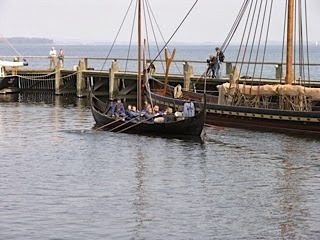
Kraka Fyr, he told me, is a replica of Skuldelev 6, one of six Viking Age ships recovered from the sea floor at Skuldelev, Denmark. According to tree-ring analysis, it was made in Sognefjord, Norway in about 1030. A sturdy little ship, it was probably designed for fishing or for hunting seals and small whales; later, it was reworked into a small freight vessel and sailed here to Denmark, where it was purposely sunk to blockade the harbor at Skuldelev in the early Middle Ages.
It was so very small. With 10 of us on board, there wasn’t much room—hardly enough room to put up the sail. But the tree-rings don't lie. At least once this little Viking ship made it the 500 miles from Sognefjord to Skuldelev. I hope they didn't have to row the whole way.
Read more about Kraka Fyr on the Roskilde Viking Ship Museum's site.
Join me again next Wednesday at nancymariebrown.blogspot.com for another adventure in Iceland or the medieval world.
Published on March 12, 2014 07:23
March 5, 2014
Vikings Come to London
 It's time for a field trip to London to see the "Vikings: Life and Legend" exhibition, which opens tomorrow at the British Museum. At its center is the biggest Viking ship in the world: a true dragonship.
It's time for a field trip to London to see the "Vikings: Life and Legend" exhibition, which opens tomorrow at the British Museum. At its center is the biggest Viking ship in the world: a true dragonship.I was lucky enough to see the ship last November at the "Vikings!" exhibition of the National Museum of Denmark in Copenhagen. Named Roskilde 6, the dragonship was discovered when the Viking Ship Museum in Roskilde, Denmark dredged its harbor area to build a restaurant and more exhibition space. I remember going to lunch with Ole Crumlin-Pedersen, former curator of the museum, when I was researching my book The Far Traveler in 2006. "Right under this restaurant we found another longship!" he exclaimed. "It stretched from this bush, almost to the edge of that building."
 It was sleek and predatory, seven meters longer than the longest longship they had found in the 1950s, in the nearby Skuldelev harbor, for which the Viking Ship Museum was created. Those ships are now conserved and displayed in the museum's exhibition galleries, while replicas float at the dock outside. The biggest is named Havhingsten, or Sea Stallion, the replica of a 30-meter-long dragonship built in Glendalough, Ireland in 1042.
It was sleek and predatory, seven meters longer than the longest longship they had found in the 1950s, in the nearby Skuldelev harbor, for which the Viking Ship Museum was created. Those ships are now conserved and displayed in the museum's exhibition galleries, while replicas float at the dock outside. The biggest is named Havhingsten, or Sea Stallion, the replica of a 30-meter-long dragonship built in Glendalough, Ireland in 1042.Roskilde 6 is 37 meters long. It was built near Oslo Fjord in 1025, according to tree-ring analysis, and carried 80 to 100 rowers. At one point, it traveled into the Baltic Sea, where it saw hard usage: A hole in the hull had to be patched. It was a king's ship, said Crumlin-Pedersen. "It’s of a very fine quality of craftmanship.
"It’s interesting," he continued. "Through these ship finds you can distinguish between different status levels, from ships of discount quality, to the Irish ship of standard quality, to the Roskilde ship of highest quality."
When it was made, King Olaf II (later known as Olaf the Saint) and Canute the Great, king of England and Denmark, were contesting the Norwegian throne. Roskilde 6 could have been built for either king.

"Ship finds," Crumlin-Pedersen added, "may lead you many places. I like to use the ship find as a lens through which to study the society. For years I’ve been in contact with sport divers, telling them the importance of protecting what’s lying on the seabed, trying to tell them that the great stories lie in the rotten timbers, not the gold coins."
Only 20 percent of Roskilde 6 is left--enough to make out its length and width (one tenth its length, of 3.7 meters). To preserve it took 15 years, according to the catalogue for the "Vikings!" exhibit at the National Museum of Denmark, "including 48 hours of vacuum freeze-drying in nine processes and more than 8,000 working hours in the conservation laboratory."
First the pieces were photographed and recorded, and all the parts numbered, while the "rotten timbers" lay on the harbor floor. Next the wreckage was transfered to water tanks at Roskilde and kept wet during cleaning "with water and paint brushes," to reveal traces of tool marks or carvings. Then it went to the National Museum's laboratories in Brede, north of Copenhagen, where the water in the wood was replaced with polyethylene glycol through the combination of freeze-drying and vacuum-processing.

Kristiane Straetkvern, who led the conservation team, writes, "The surviving parts of the wreck consisted of around 200 pieces and most of them were broken in many places. … The final part of the conservation process was to glue the broken pieces together." Then to design the support structure. "All the planks were provided with individual stainless steel supports. To ensure a safe move from one exhibition to the next, the timbers are packed in 35 boxes with individually designed crates."
The stand--looking like the silver skeleton of a Viking ship--snaps together like a children's toy. Says Tom Williams of the British Museum, "This is a breathtaking work of modern design in its own right."
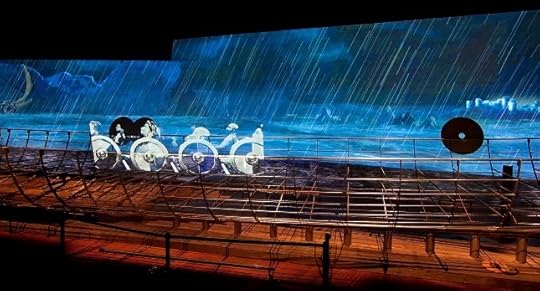
In Copenhagen, Roskilde 6 filled the hall from end to end, with the rest of the "Vikings!" exhibition organized around it. A wall-sized screen projected a slow-moving fjord scene. Standing on the raised "dock" beside the ship, you watched the scenery pass as if you were rowing on the ship. A thunderstorm approached; lightning struck. I expected to see Vikings frantically bailing--but it wasn't that real.
In January, Roskilde 6 "sailed" again to London, where it is the centerpiece of the "Vikings: Life and Legend" exhibition, running March 6 to June 22 at the British Museum. Photos courtesy of the British Museum, The National Museum of Denmark, and Kate Driscoll (of Crumlin-Pedersen).
Join me again next week at nancymariebrown.blogspot.com for another adventure in Iceland or the medieval world.
Published on March 05, 2014 06:54
February 26, 2014
Ragnar Lothbrok's Viking Style
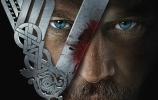 Tomorrow the sexy Viking Ragnar Lothbrok returns to the TV screen in Season Two of the History Channel's series, "The Vikings." I hope he still has his fancy hairstyle.
Tomorrow the sexy Viking Ragnar Lothbrok returns to the TV screen in Season Two of the History Channel's series, "The Vikings." I hope he still has his fancy hairstyle.At first it didn't say "Viking" to me. I wanted shaggy, "Thor"-style hair and a forked and braided beard. But as I've been rereading the historical texts from the Viking Age, as research for my next book The Ivory Vikings, I keep stumbling upon the sources the History Channel's writers must have used.
Ragnar Lothbrok's hairstyle seems to me to have been modeled on that of Sviatoslav, the prince of Kiev, whom the Byzantine historian Leo Diakonus met in about 950 on the banks of the Danube. As quoted by Robert Ferguson in The Vikings: A History (Viking Penguin, 2009):
"He manned the oars just as his followers did…. He was of medium height, neither too big nor too small. He had thick eyebrows, blue eyes, and a short nose. He was not bearded, but wore a long, drooping mustache."(Ragnar Lothbrok needs one of these.) "His head was shaven apart from a single lock of hair on one side of his head, this being a sign of his aristocratic status. His neck was thick, his shoulders broad, and all in all he looked quite magnificent. There was something wild and bleak about him."
That's the History Channel's Ragnar Lothbrok to a "T"--except for the mustache and the fact that Ragnar's single lock is down the back, not off to one side, and is braided, but those are minor points. He certainly is "wild and bleak" and "magnificent."

Leo Diakonis also says Sviatoslav wore a large earring in one ear: It was a gold hoop with three gems set into it, the middle one a red ruby. Perhaps Ragnar will acquire one on his next raid.
Other than this Byzantine description of a Viking on the "East Way" from Russia to Byzantium, we have few descriptions of Viking men's hairstyles. The 13th-century English chronicler John of Wallingford complained that Vikings were always combing their hair to look pretty to the women, and considering the number of combs archaeologists find in Viking settlements and graves, he was probably right. (Another reason to comb hair was to pick out the lice.)
A silk hairnet was found in Viking Dublin, but that probably belonged to a woman. Depictions on Viking artifacts show that both men and women favored long hair, according to the 1994 Cultural Atlas of the Viking World. Some men "wore theirs tightly rolled into a bun at the nape of the neck, others had their hair shaved, while the women sometimes arranged their long flowing locks in rather complicated styles knotted on the crown of the head."
There's a famous saga episode that centers around a man's "long flowing locks." As told by Snorri Sturluson in The Saga of Olaf Tryggvason (in Lee Hollander's translation), the famous Viking band that haunted the Baltic, the Jomsvikings, were defeated and captured. Thirty of them were forced to sit on a log, their feet tied to each other but their hands free. They are to be beheaded. Each Viking wants to die memorably.
"Then one of them said, 'Here I have a dagger in my hand, and I shall stick it in the ground if I am conscious when my head is chopped off.' He was beheaded, and the dagger dropped from his hand."
So much for experimental science in the Viking Age.
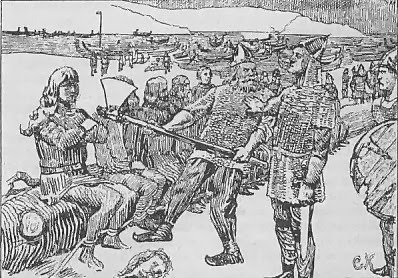
Snorri continues: "Next to him sat a handsome man with long and fine hair. He swept his hair forward over his head and stretched out his neck, saying, 'Don't sully my hair with blood.' A man took hold of his hair with a firm grip. Thorkel swung his axe, but the viking swiftly jerked his head back, so the man holding his hair was forced forward, and the axe fell on both hands, shearing them off so that the axe struck the ground.
"Then Earl Eirik came up and asked, 'Who is this handsome man?'
"'They call me Sigurth,' he said, 'and I am said to be the son of Bui. Not yet are all Jomsvikings dead.'
"Eirik said, 'You are truly likely to be the son of Bui. Would you have quarter?'
"'That depends on who offers it,' said Sigurth.
"'He offers,' said the earl, 'who has the authority to do so--Earl Eirik.'
"'Then I accept,' said he. Thereupon he was released from the rope."
Ah, for Viking braggadoccio.
Then there's the eye-makeup and the tattoos. All the Vikings in the History Channel's series seem to have tattoos, while some, like Floki and the seer are remarkable for their gobs of black eye-shadow. Both of these were singled out for attention by Arab travelers.

The Arabic sources on the Vikings are collected and translated in a handy volume by Paul Lunde and Caroline Stone, Ibn Fadlan and the Land of Darkness (Penguin, 2012). The 10th-century Arab traveler, Ahmad Ibn Fadlan, who described the Viking funeral I wrote about two weeks ago [2-12], is our only source for the idea that Vikings liked tattoos. He met a party of Viking (or "Rus") traders by the Volga River and wrote, "From the tips of his toes to his neck, each man is tattooed in dark green with designs and so forth."
The eye-makeup comes from a different source. In 965, Ibrahim Ibn Ya'qub traveled through northern Europe. He came to Schleswig--the Danish Hedeby--which he described as "a very large city on the coast of the ocean." It was "poor in grain and the climate was bad. The inhabitants mostly eat fish." Then he mentions the make-up: "Both men and women use a kind of indelible cosmetic to enhance the beauty of their eyes." That pretty much leaves it up to interpretation how much make-up they used and where they applied it.
Floki's big black eyes might or might not be accurate, but it's certainly effective. He might not be "wild and bleak" and "magnificent," but in many ways he's my favorite character. I've always loved a trickster.
Join me again next week at nancymariebrown.blogspot.com for another adventure in Iceland or the medieval world.
Published on February 26, 2014 06:23



